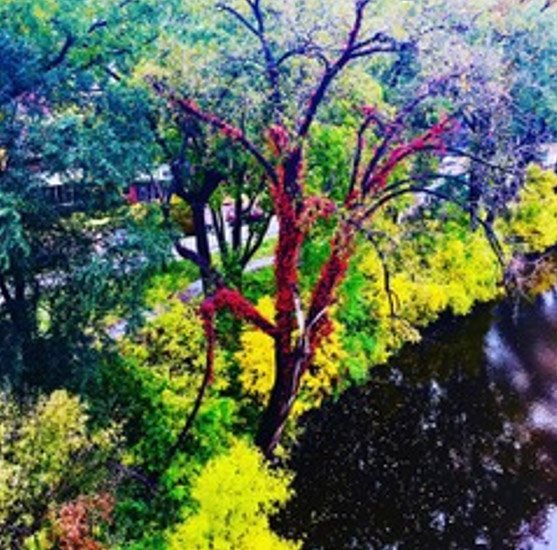Falling Gracefully into a Minneapolis Winter
I love autumn in the Twin Cities. I love the change from intense heat, to brisk evenings. I love watching the leaves fall and the colors change. I love pulling out the sweaters, scarves, gloves and hats. I love the family and friend gatherings, the food, the drink, the desserts, and the celebrations. For centuries we have evolved to understand that these preparations are necessary in order to withstand the impending hibernation of winter. Yet, even with all these ingrained gestures to endure the cold weather, we have not yet perfected our ability to prepare our immune systems for the change. It seems that perhaps we forget the subtle tips that nature gives us on a regular basis.
Traditional societies regard the seasons and abide by seasonal laws. In the second chapter of the Yellow Emperor’s Classic of Internal Medicine, created between the late Warring States period (475-221 BC) and the early Han period (206 BCE–220 CE) in China, particular emphasis is placed on seasonal considerations. It outlines which specific punishments will immediately follow each act of disobedience towards the laws of a season.[i]
Stoking your immune system for the winter, whether you are conscious of it or not, is actually facilitated by the seasonal fruits and vegetables available during the summer and fall. Knowing which foods fortify which systems is a good trick to keep in your back pocket. It will allow you to think ahead for the seasons to come. A great way to check seasonality is to frequent your local farmer’s market. You will assuredly be keeping your immune system in tune with which vitamins it needs.
For example, during the fall, one generally experiences a runny nose, cough, tickle in the throat, dry skin, cold extremities, etc. From a Traditional Chinese Medicine standpoint, fall is associated with the metal element, whose color is white. The metal element is associated with the Lungs and Large Intestine, skin, nose and circulation. Eating fruits and vegetables that are white is found to fortify the metal element.
Of equal importance is the earth element. The earth element’s season is the summer, it is related to the Spleen and Stomach and the color associated is yellow. The earth element is considered the center. In order to fortify other elements, focusing firstly on the earth element will ensure proper balance.
Here’s a list of foods to consider eating en mass during the fall in Minnesota. Notice that many of them are white and yellow:
Veggies
* Beets
* Broccoli
* Brussels Sprouts
* Cabbage
* Carrots
* Cauliflower
* Collard Greens
* Italian Parsley
* Fennel
* Jerusalem artichokes (a/k/a sunchokes)
* Kale
* Kohlrabi
* Leeks
* Mushrooms
* Onions
* Parsnips
* Peppers
* Potatoes
* Pumpkins
* Shelling Beans
* Turnips
* Winter Squash
Fruits
* Apples
* Concord grapes
* Niagara grapes
* Pears
* Figs
Meats and Protein
* Duck
* Pheasant
* Rabbit
* Venison
* Wild Turkey
* Chicken Eggs
Fish
* Atlantic Mackerel
* Bluefish
* Monkfish
* Native Oysters
* Pacific Salmon
* Red Snapper
* Scallops (bay and sea)[ii]
Grains
* Rice
* Millet
Here are a few of my seasonal favorites:
Pears- good for cough with mucus, constipation, difficulty swallowing, difficult urination, indigestion, over consumption of alcohol[iii]
White Fungus- good for coughs, mucus and chronic constipation[iv]
Chicken Eggs- good for cough, hoarseness, pink eyes, sore throat, dryness and burns[v]
Other helpful Minnesota autumn tips:
Avoiding the wind at all costs is crucial to avoiding the onset of a cold or flu. Think of carrying a scarf or a sweatshirt. Tell yourself, feel wind, have scarf, can wear… Wearing a scarf protects the pores at the base of your scalp and neck. Wind is believed to enter through the pores at the nape of the neck, and is also considered to be the ‘big brother’ of all pathogens. Classic symptoms of a wind invasion involve chills, stiffness and pain at the base of the neck and head, and possibly fever. As the ‘big brother’ wind can carry other pathogens into the body as it invades. Wind, cold, heat and damp are all considered pathogens in TCM. Depending on the onset of the symptoms, traditional methods of treatment cater to resolving wind as well as what else came in through the back door with it. Seeing an acupuncturist at the onset of these symptoms will help you avoid the later stages of pathogenic invasion.




